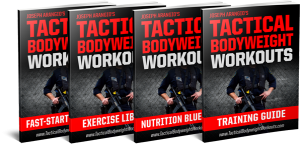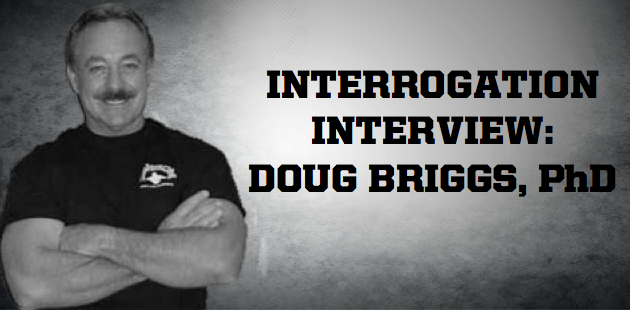It’s only a few minutes after sunrise, but you can already feel the Texas heat and hear the orchestrated clanging of metal-against-metal.
On a typical day at Fort Bliss, in two nondescript buildings known as Ironworks Gym East and Ironworks Gym West, Doug Briggs, Ph.D., oversees nearly 1,400 soldiers training in groups as large as 300 at a time.
But you won’t see sloppy kipping pullups and fly-by-the-seat-of-your-pants exercise programming while training under Coach Briggs. You know, the military-style cross-training workouts popularized by CrossFit, the uber-successful (and equally controversial) fitness craze.
In fact, a recent study in the Journal of Strength and Conditioning Research reported over 3 injuries per 1,000 CrossFit sessions, which is about the same rate as that found in competitive weightlifters.
Since 2007, Briggs and his army of tactical strength and conditioning coaches have been helping thousands of Fort Bliss soldiers boost strength, speed, power, and agility with a system called Mission Essential Fitness (MEF). The smart training system has grown to include other installations including Fort Riley, Fort Belvoir, Fort Sill, Vicenza, Italy and IMCOM Europe.
An October 2012 study, published in Military Medicine, showed MEF’s ability to improve PT scores by as much at 50 points in 6 months with no injuries. “This type of structured and progressive training is required for a soldier to carry out their mission in today’s modern combat environment,” says Briggs, who created the system in 2005.
“In one European study that followed MEF protocols, there was an observed reduction in sick-call visits of soldiers by 50%,” says Briggs.
If you’ve ever had to carry heavy loads, get in and out of a vehicle while wearing your kit, or run PT on gravel, then you must read this Interrogation Interview.
JOSEPH ARANGIO: Provide examples of real-world bodyweight-only workouts military operators are doing in the field.
DOUG BRIGGS: This is an example of a circuit using 15 stations that can be used with equipment or in the field.
Exercises and variations:
- Station 1: TRX straps, barbells, dumbbells, kettlebells, weight plates, ammo boxes, and so forth.
- Station 2: TRX straps.
- Station 3: Boxes, pallets, tires, and so forth.
- Station 4: Medicine ball, dumbbells, kettlebells, weight plates.
- Station 5: TRX straps.
- Station 6: Barbells, pipes, axles, logs and so forth.
- Station 7: Dumbbells, kettlebells, ammo boxes, one gallon jugs.
- Station 8: Kettlebells, dumbbells, ammo boxes, and so forth.
- Station 9: Cones, markers, paint, rocks, gas cans, ammo boxes and so forth.
- Station 10: Cones, ammo boxes, vehicle parking blocks, sand bags and so forth.
- Station 11: Medicine balls, dumbbells, Bosu balls.
- Station 12: Medicine balls, dumbbells, kettlebells, weight plate, and so forth.
- Station 13: Boxes, pallets, tires, anything stable and with height.
- Station 14: 4” x 4”, cones, ammo boxes, gas cans, sand bags.
- Station 15: Sand bags.
All circuits are designed and taught here at Fort Bliss to be modified in the field using readily available items found when downrange. Many downrange positions have very good access to all types of equipment.
JA: How important is it to train in your full gear, in order to prepare you for the demands of an extra 50-75 pounds of kit?
DB: Full-gear training is usually done in a field-training status. For training in our strength and conditioning facilities, we will utilize weighted vests from 10 lbs. to 40 lbs. and with weights added using various implements like barbells, dumbbells, kettlebells, medicine balls, yokes, farmers walk, sleds, and other training tools.
JA: I noticed many eccentric deceleration injuries in military operators, in the literature. Like jumping off a truck bed in full gear, landing and twisting an ankle or blowing out a knee. Any thoughts on how to decrease incidence of this type of injury?
DB: We decrease the incidence of these types of injuries using weights and motions that duplicate those found in a day-to-day environment with special emphasis on combat readiness. We do this by utilizing plyometric box jumps, sleds, yokes, farmers walk, kettlebells, dumbbells, hoops, bands, hurdles, agility ladders, Bosu balls, physio balls, Airex balance pads, stability training pillows, disc pillows, balance steps, wobble and rocker boards, power wheels and so forth. We do this on stable and unstable surfaces, in balanced and unbalanced positions, on even and uneven surfaces, indoors, on hard flooring and outdoors in the dirt. To date we have had no injuries.
JA: How important is it to train in an “adrenalized” state? In other words, getting your heart rate above 165 bpm in order to prepare for the adrenaline dump that happens when the enemy is trying to kill you.
DB: It is very important to train in an “adrenalized” state and it is done routinely with our standard training circuits, where the heart rate stays above 165 bpm through the exercise portion of the circuit. A standard circuit will start with 1 minute per station for the first rotation of the circuit with 30 seconds rest between stations. On the second rotation it remains at 1 minute per station of the circuit with 20 seconds rest between stations and on the third rotation 1 minute per station with cool down following the completion of the circuit.
Circuits are based on the number of soldiers training and can go from as few as 10 stations to large circuits with 60 stations. In the large circuits a soldier will never hit the same exercise twice. A normal circuit takes approximately 52 minutes to complete.
Circuits are set-up with a station having five soldiers per station doing the same exercise, i.e., the power cleans would utilize five platforms and each platform would have a different weight set-up to accommodate the different strength levels of the soldiers. Professional staff members go through the entire circuit, station-by-station, explaining and demonstrating proper form for each station and then once the training begins the staff monitors and corrects form as the circuit progresses. Soldiers monitor and correct each other as well.
JA: As a segue, please discuss how to prepare your body to focus your vision, calm breathing, and concentrate in order to place a bullet on target… while in this adrenalized state.
DB: This can done by placing the body in stressed status using a MEF circuit either indoors or in the field and then going into a simulated or live fire mode. When training physically, “Performance Burst, Maximizing Self Talk,” is utilized with “Thought Performance Interaction.”
What this does is:
- Builds, sustains, and recovers confidence
- Increases motivation and persistence to push your limits
- Directs focus to the present task and aids execution
- Decreases stress
- Enhances performance
This is done in conjunction with the former Army Center for Enhance Performance (ACEP) now known as Comprehensive Soldier and Family Fitness (CSF2) Program.
The body and mind are stressed and required to operate in an adrenalized state using feedback methods to restore the ability to accurately assess and address a situation making a determination as to whether or not to engage the threat at hand and, if need be, do so in a timely and very accurate execution pattern to accomplish the mission.
JA: What future trends do you see regarding tactical strength and conditioning?
DB: I see future trends including research done by reputable organizations using a peer review method such as that done by the National Strength and Conditioning Association. The research will focus on tactical strength and conditioning systems and look at various cross-training methods for training effectiveness, injuries, and cost associated with effectiveness and injuries. By cost I mean the cost to certify, equip, and train tactical strength and conditioning providers. In addition, actual costs of downtime due to injuries and disabilities, and payments to individuals injured as a result of these types of training methods, to include initial evaluation of the injury, medical treatment, surgery and rehabilitation.
My vision includes a return to training specificity as training is specific and away from non-specific training methods which, in cross training, amount to exercise only and not actual training. Most cross training systems are nothing more than exercise and those that participate in this type of training are “exercisers” and not athletes.
This short workout method is ideal for the ADHD generation that we all see everyday, but will never be for athletes as our training programs are structured with a method to the madness utilizing proper exercise order and recovery (both during and post workout). We do not count reps for time and our focus is on quality work, not slop.
 Build Elite Tactical Strength with the Ultimate Tactical Bodyweight Exercise Training Program... Over 100 Exercises.
Build Elite Tactical Strength with the Ultimate Tactical Bodyweight Exercise Training Program... Over 100 Exercises.
No Gym Required
Tactical Bodyweight Workouts is based on the teachings of tactical strength and conditioning coach, Joseph Arangio, MS, CSCS.
